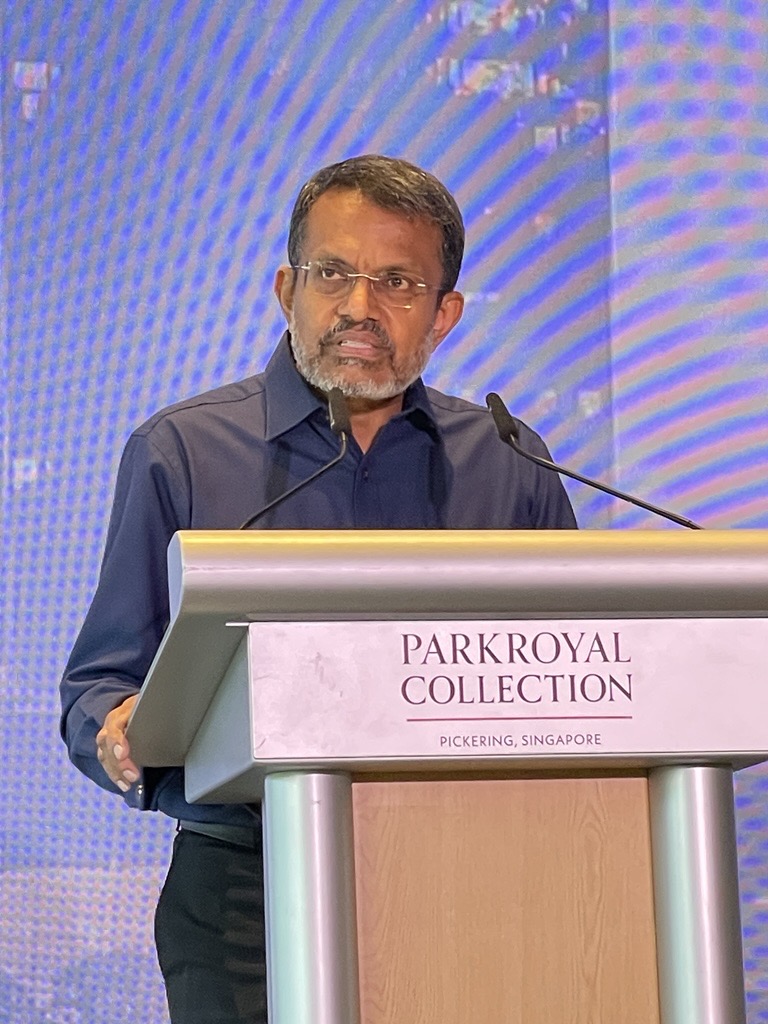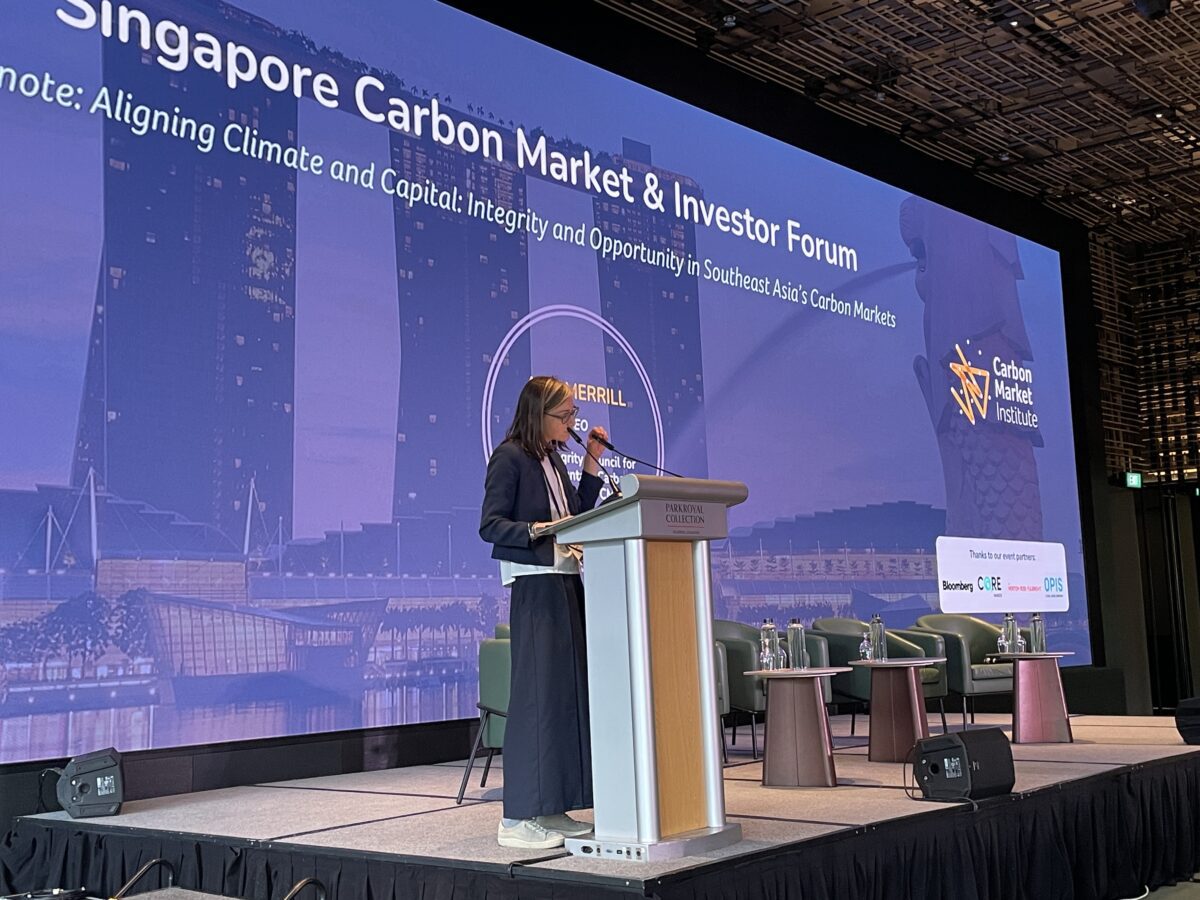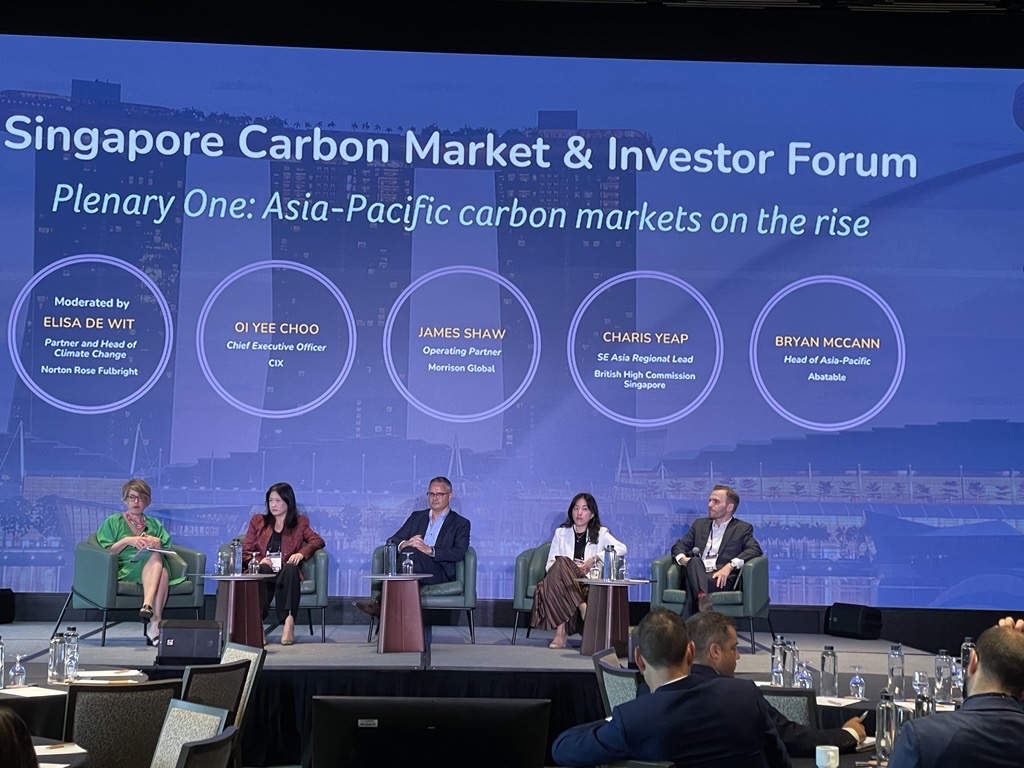It’s a pleasure to be here in Singapore, for the third Carbon Market and Investor Forum hosted by the Carbon Market Institute.
This year represents the 10th anniversary of Australia’s Comprehensive Strategic Partnership with Singapore.
The anniversary was marked by the signing of a new version of the partnership agreement last Wednesday, by Singapore’s Prime Minister Lawrence Wong, and Australia’s Prime Minister Anthony Albanese.
Unlike the first version signed 10 years ago, the new version has a strong focus on the need to cooperate on climate change.
In fact the new, updated version signed last week includes a section on “transitioning to net zero”, which commits both countries to deeper collaboration on energy security and the transition to net-zero emissions.
This evolution of the Singapore-Australia strategic partnership agreement is unsurprising.
Because all Asia Pacific nations are acutely aware that strategic cooperation on multiple fronts, especially in finance and trade, is crucial in order to successfully fight climate change.
Asia Pacific nations are acutely aware of the chaos that climate change brings with it, and of the need to act as swiftly as we can.
As Indonesia’s President Prabowo, leader of the world’s largest island nation, said to the UN last month: “We choose to confront climate change — not by slogans, but by immediate steps.”
Brazil’s president Lula has said that this year’s climate COP in Belem will be an “action COP” and a “COP of truth”.
We know that this is not a time for indifference or resignation to runaway climate damage.
We can all see the positive transformative opportunities for our region that will be realised through “immediate steps” to avert a climate crisis – economic prosperity in the burgeoning of new industries, restorations of vital ecosystems and community empowerment and resilience.
In short, we know that we are in this together, and we must stand together in our ambition.
In an increasingly fractured and uncertain world, in our unique region we see continued commitment towards greater ambition and cooperation on climate change.
We see that commitment to increased ambition in the updated NDCs lodged this year.
China has undertaken to reduce economy-wide net greenhouse gas emissions by 7% to 10% from peak levels, marking the country’s first absolute emissions reduction target covering all greenhouse gases and sectors.
Singapore has this year undertaken to reduce its greenhouse gas emissions to between 45 and 50 million tonnes by 2035, representing significant progress from its 2030 target of a cut to no more than 60 million tonnes by 2030.
And I am proud to say that Australia has also recognised the need to be ambitious, with its new target of a 62% to 70% reduction in national emissions by 2035.
These examples show that this is a region that is stepping up, not stepping away.
Those of us here today also know that success in the fight against climate change will require large amounts of finance, both public and private, and that this will involve an important role for regulated and voluntary carbon markets.
Benedict Chia, director-general of Singapore’s National Climate Change Secretariat, whom we will hear from shortly, put this eloquently at an event a few weeks ago.
He said that companies and countries must work together “to unlock abatement that would not have occurred otherwise, and to crowd in private-sector financing for projects that would not otherwise have been able to secure financing”.
As Benedict put it: “(The role of carbon markets) is becoming increasingly important because of the various headwinds that we have been facing in terms of economics, in terms of the geopolitical global environment.”
But carbon markets can only play that important role if they are well regulated to drive high integrity outcomes, and if they are widely seen and understood to be well regulated.
For this reason, maximising the contribution of carbon markets so they can support greater climate ambition, while ensuring their integrity, will be a common thread running through both days of this event.
Across the region, and indeed globally, we are seeing momentum by governments to strengthen carbon markets, and to build confidence in them, recognising that this is an essential task in order to grow them.
The Japanese government’s Joint Crediting Mechanism, or JCM, continues to expand and mature.
Meanwhile, China, in a recent progress report on its national carbon market, said “the Chinese government attaches great importance to the development of China’s National Carbon Market.”
By 2027 it is anticipated that China’s national trading scheme will encompass all major industrial sectors.
Malaysia is launching a carbon tax next year, and has this month released a roadmap to decarbonise its steel industry, while Thailand is currently finalising its landmark, comprehensive new climate legislation that will introduce emissions trading.
Australia also has a government-backed compliance carbon market, underpinned by the reformed Safeguard Mechanism that covers some 219 of the largest industrial facilities, and the Australian Carbon Credit Unit Scheme that has incentivised a broad range of abatement activities with a high degree of regulatory oversight for more than 10 years.
Strengthening Australia’s market-based mechanisms, including by broadening and deepening the Safeguard Mechanism will be critical to meeting Australia’s high ambition 2035 target.
Australia has also taken a leadership role on nature, legislating a new Nature Repair Market. This market will have a key role to play in helping to protect and repair our natural ecosystems. Interacting with Australia’s carbon market, the Nature Repair Market presents opportunities to develop holistic climate and nature solutions that deliver both high integrity carbon abatement and biodiversity improvements.
More broadly, while companies are just starting to grapple with their obligations to manage nature risk there is an opportunity for governments to guide investment towards the interconnected net zero and nature positive goals.
National governments also have an important role to play in guiding voluntary climate action, to support high integrity carbon market engagement.
Governments across the region, including Australia, should look to back-in the maturing and converging body of best practice voluntary standards through certification programs and guidance linked to mandatory climate-related financial disclosure and transition planning regimes.
This includes standards such as the forthcoming ISO net zero standard for organisations, that will help to drive and underpin high integrity voluntary action by businesses.
By strengthening expectations on credible transition towards net zero, governments can support consumer trust and build business confidence to invest in climate solutions beyond what might be achieved through regulation and compliance frameworks alone.
Thankfully, we are already seeing signs of governments in the region providing leadership to support high-integrity carbon market engagement.
Just last week, the Indonesian government signed an agreement that formalises its partnership with the Verra carbon crediting program, with the aim of growing investment in its carbon market, and boosting the generation of high-integrity carbon credits.
Singapore is also showing leadership in this regard. Along with the UK and Kenya, Singapore has founded the Coalition to Grow Carbon Markets – an initiative that is co-chaired by our first keynote speaker today, Singapore’s Ambassador for Climate Action, Ravi Menon.
The Coalition recognises that high integrity carbon credits are an under-used tool to enable more ambitious climate action, and aims to foster confidence in carbon markets and strengthen their interoperability.
To that end, and in association with the Integrity Council for the Voluntary Carbon Market, it is developing shared principles to give businesses confidence to participate in voluntary carbon markets.
Another regional carbon market initiative that it is very exciting to see is the ASEAN Common Carbon Framework, which aims to align standards, build trust, and facilitate access to climate finance through carbon markets.
This sort of government leadership is crucial, because we need businesses to be fully engaged in the net zero transition.
In many ways, the Asia Pacific is a beacon of hope for other parts of the world on climate change. Underpinned by a strong commitment to cooperation, the region has demonstrated technological and policy innovation.
We can see this regional leadership in the outlines of new clean economy supply chains and trading opportunities that are starting to emerge.
We can see it in the work that is being done in this region to build supply chains and markets for low-carbon liquid fuels, and to deploy and share renewable energy – work that helps to operationalise the COP28 commitment to transition away from fossil fuels.
We can also see regional leadership in the cooperation on carbon markets, that is destined to rapidly deepen.
And we can see this cooperation potentially even extending to a regional-level CBAM.
We know that countries in this region understand that fighting climate change isn’t a hindrance or a distraction as we attempt to improve living standards. In fact, fighting climate change offers an important opportunity to reduce inequalities.
Very soon we will know whether COP31 will be an Australia-Pacific COP.
It’s true that Australia is seeking to host COP31 in partnership with its Pacific neighbours, the small island states that have been such powerful advocates for climate action and climate justice, evidenced most recently with their extraordinary win at the International Court of Justice. It must be acknowledged that the ICJ Advisory Opinion has implications for all countries in clarifying the expansive legal obligations of states with respect to climate change, requiring that they take all measures within their power to prevent significant harm.
We also know that our neighbours to the north, ASEAN member countries and other countries in Asia, will be essential partners if COP31 is to be a success, and if COP31 is to be a platform that results in stronger, faster, global action that avoids increased disruption and escalating economic losses.
COP31 has the potential to draw the global spotlight to the Asia-Pacific region – to magnify trade opportunities, and to ensure that adequate aid goes to those in the region who need it most.
And Australia’s commitment to being a genuine regional partner, committed to ambitious climate action, is made clear in its recently released Net Zero Plan.
Through international cooperation, Australia can stretch its climate ambition. A clear program on carbon market cooperation across the region will be essential to building strong and interconnected carbon markets. This can in turn accelerate the transfer of climate finance, technology and expertise
But regardless of the COP31 bid outcome, our region will remain critical to the success of the net zero transition globally.
As Singapore’s Climate Ambassador underscored in May this year at the Philanthropy Asia Summit, “Asia is where the fight against climate change will be won or lost”, because 50% of global emissions and 90% of the world’s future growth in energy demand will come from Asia. And “Asia will suffer the most from climate change” in term of the physically impacts of climate change on lives and livelihoods.
That is why the scaling of finance and carbon market across the region remain a vital project for governments and businesses alike.
Through immediate steps and decisive reform and action, we can build the resilience of our communities and economies in the face of climate disruption.
We can continue to be the beacon of hope for other parts of the world in championing international cooperation at this critical moment.



